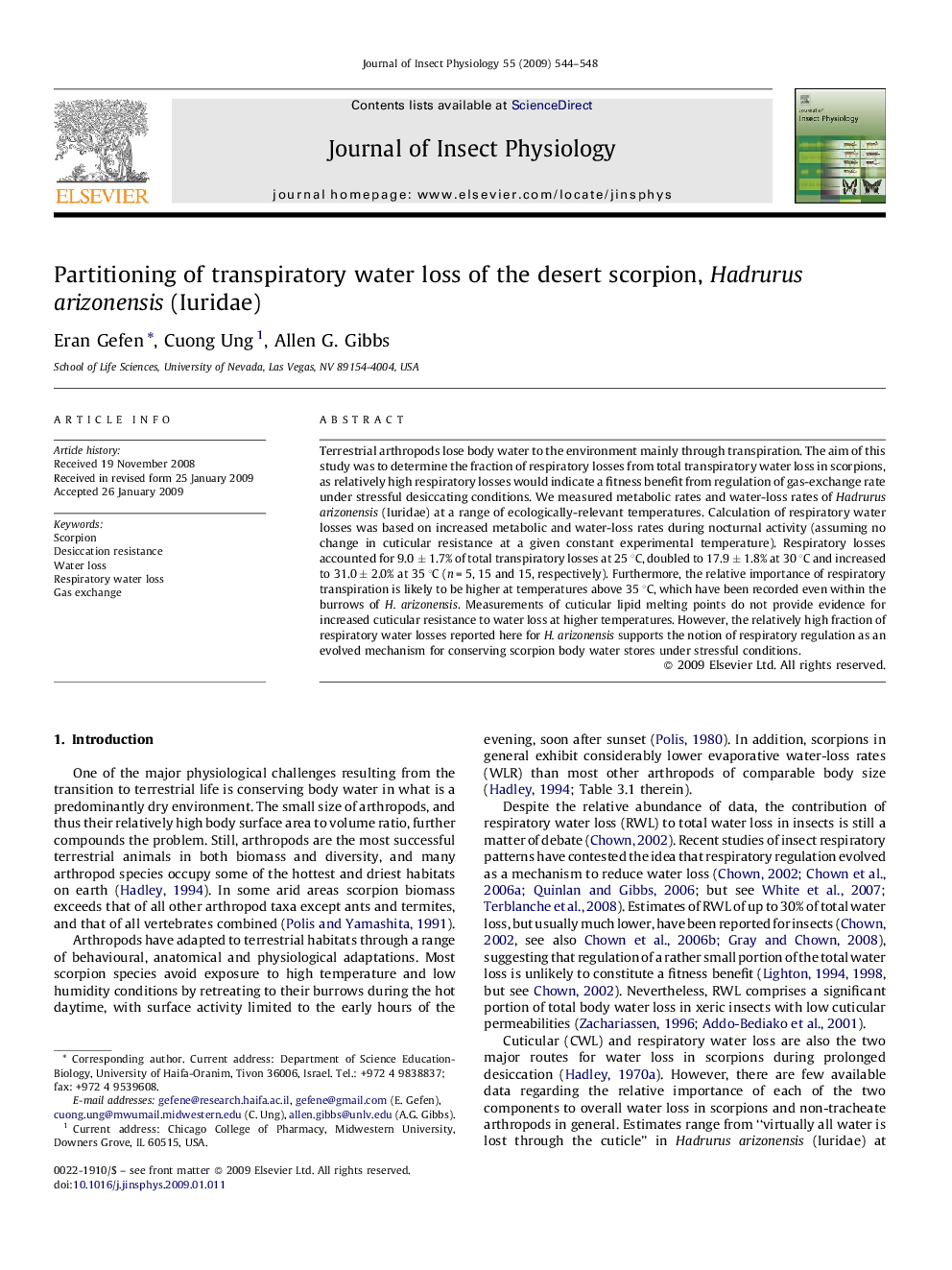| Article ID | Journal | Published Year | Pages | File Type |
|---|---|---|---|---|
| 2841154 | Journal of Insect Physiology | 2009 | 5 Pages |
Terrestrial arthropods lose body water to the environment mainly through transpiration. The aim of this study was to determine the fraction of respiratory losses from total transpiratory water loss in scorpions, as relatively high respiratory losses would indicate a fitness benefit from regulation of gas-exchange rate under stressful desiccating conditions. We measured metabolic rates and water-loss rates of Hadrurus arizonensis (Iuridae) at a range of ecologically-relevant temperatures. Calculation of respiratory water losses was based on increased metabolic and water-loss rates during nocturnal activity (assuming no change in cuticular resistance at a given constant experimental temperature). Respiratory losses accounted for 9.0 ± 1.7% of total transpiratory losses at 25 °C, doubled to 17.9 ± 1.8% at 30 °C and increased to 31.0 ± 2.0% at 35 °C (n = 5, 15 and 15, respectively). Furthermore, the relative importance of respiratory transpiration is likely to be higher at temperatures above 35 °C, which have been recorded even within the burrows of H. arizonensis. Measurements of cuticular lipid melting points do not provide evidence for increased cuticular resistance to water loss at higher temperatures. However, the relatively high fraction of respiratory water losses reported here for H. arizonensis supports the notion of respiratory regulation as an evolved mechanism for conserving scorpion body water stores under stressful conditions.
